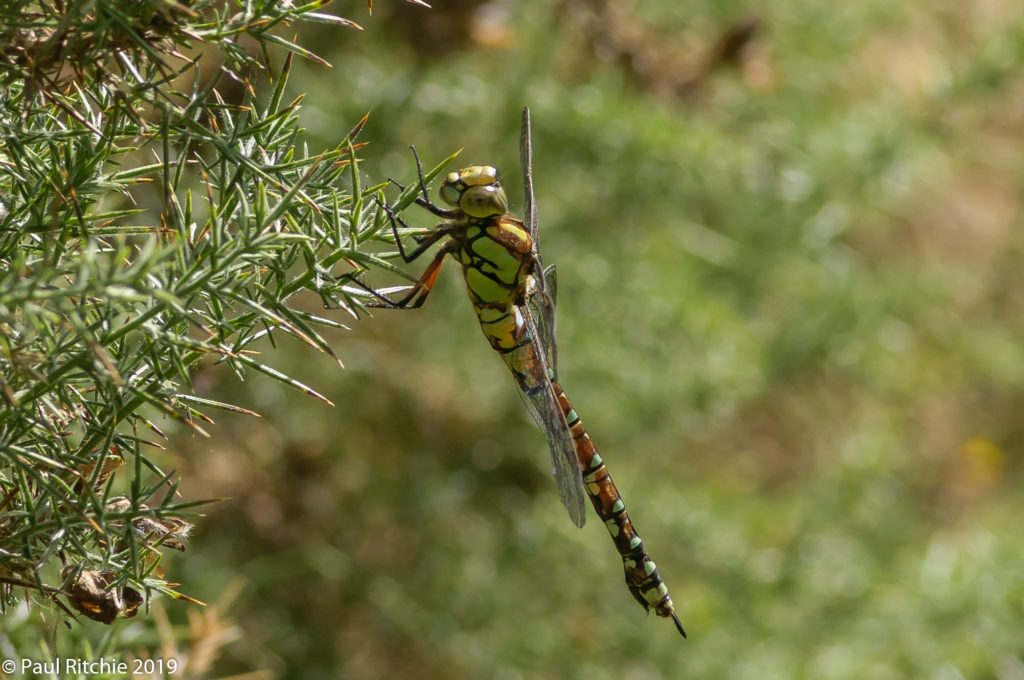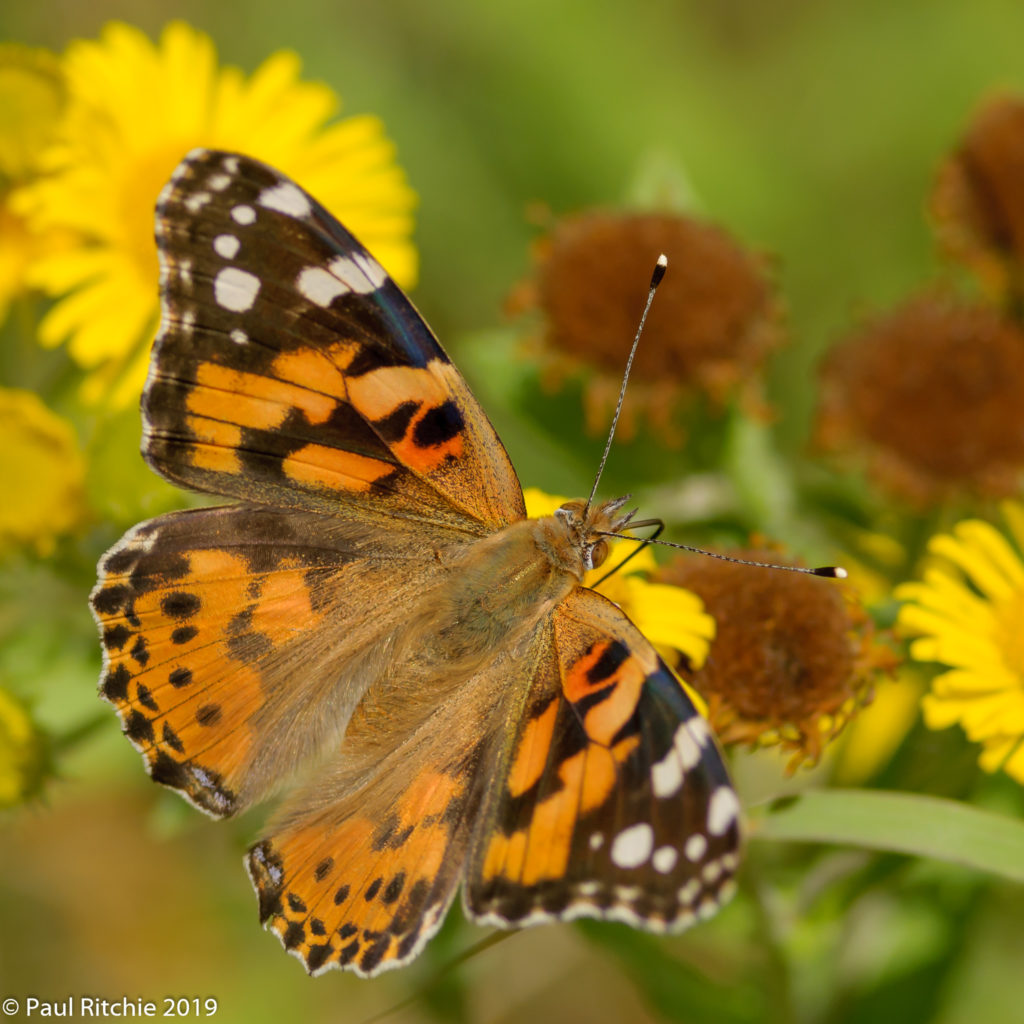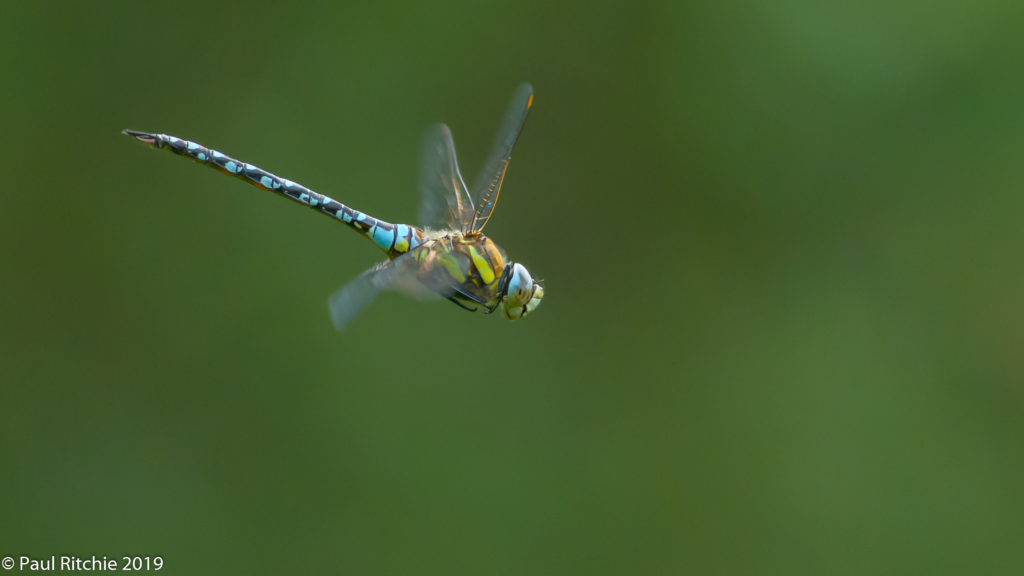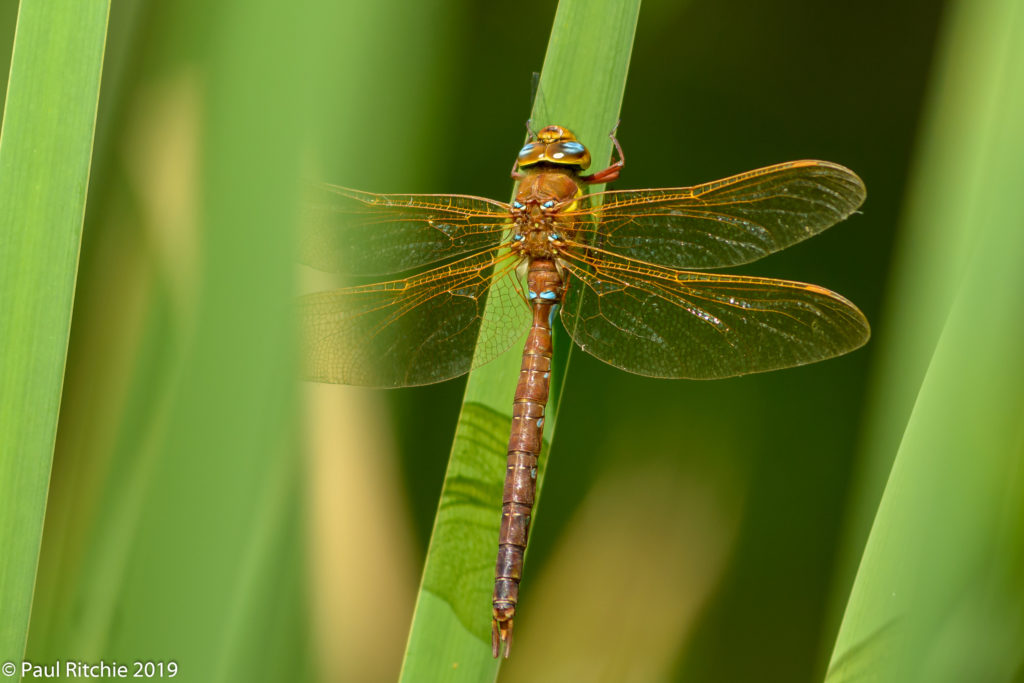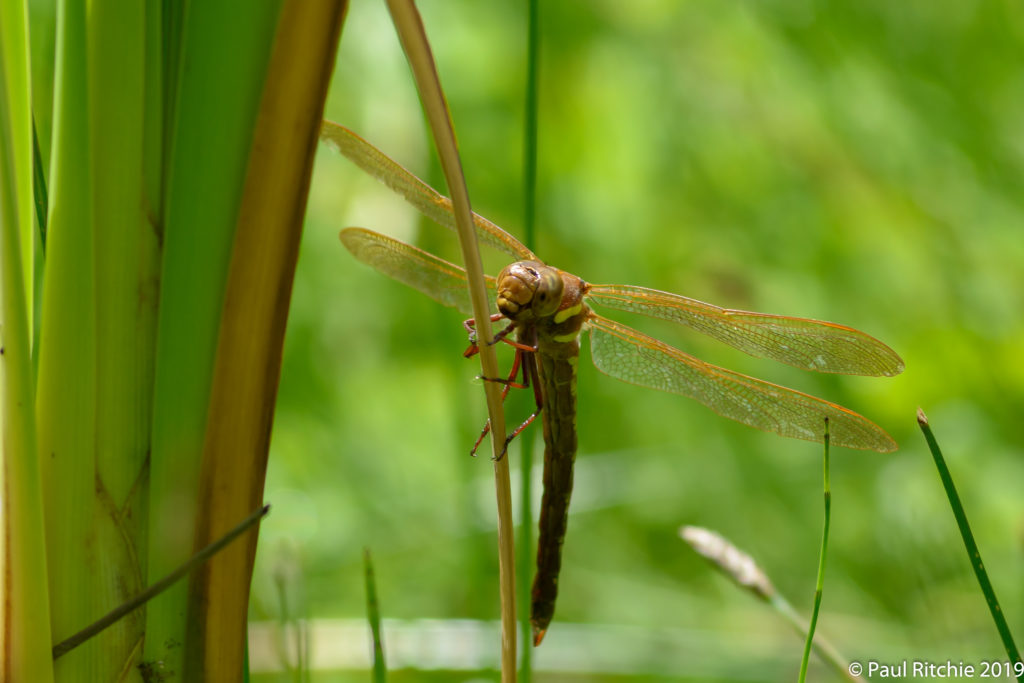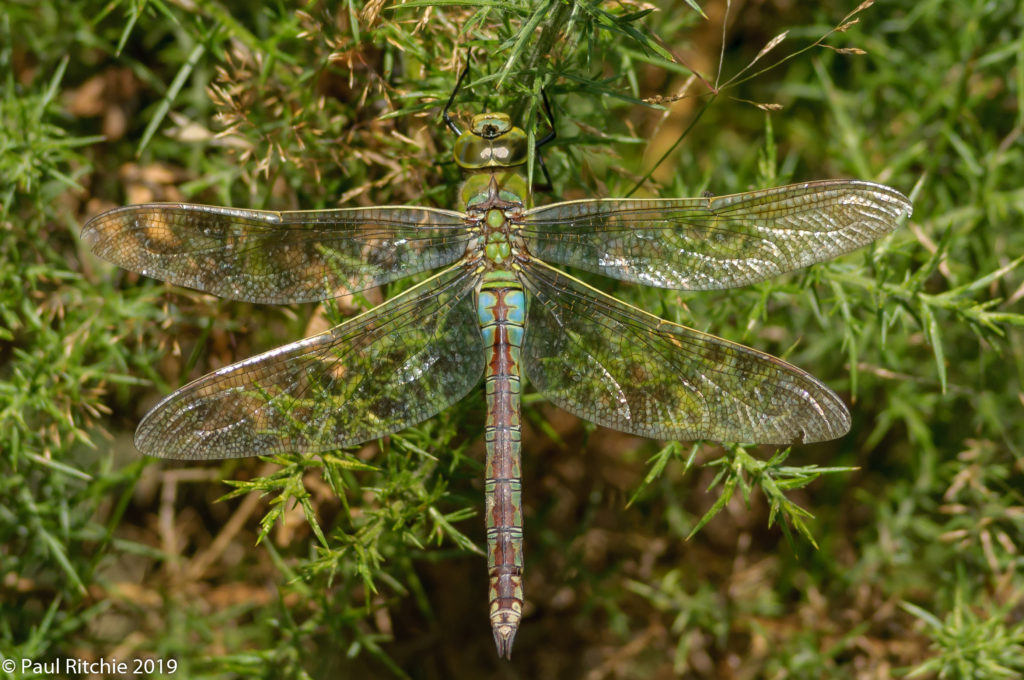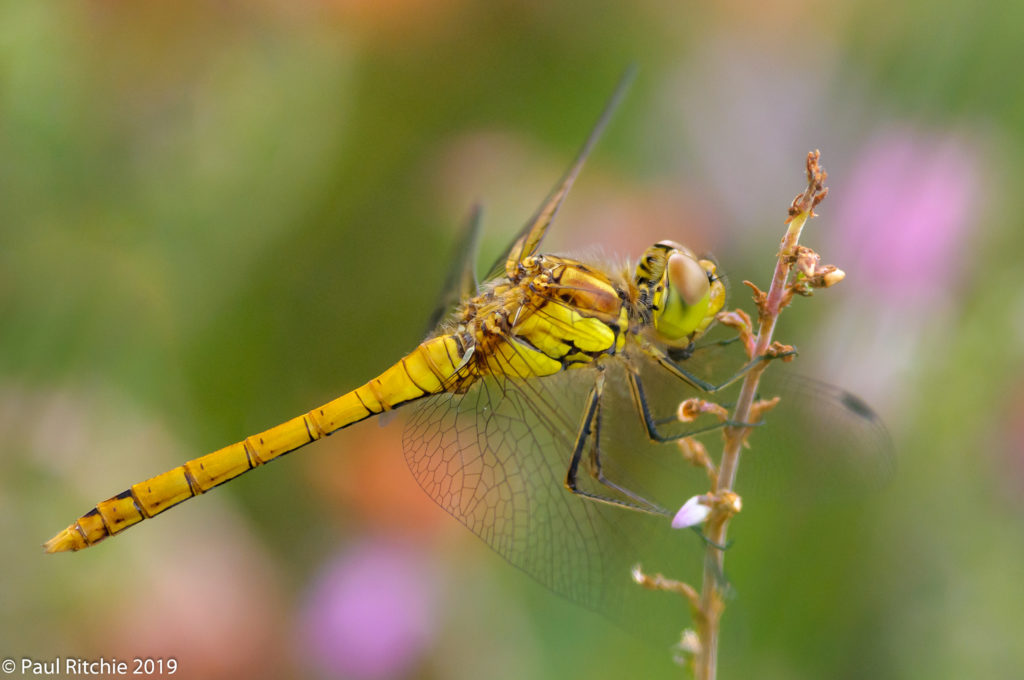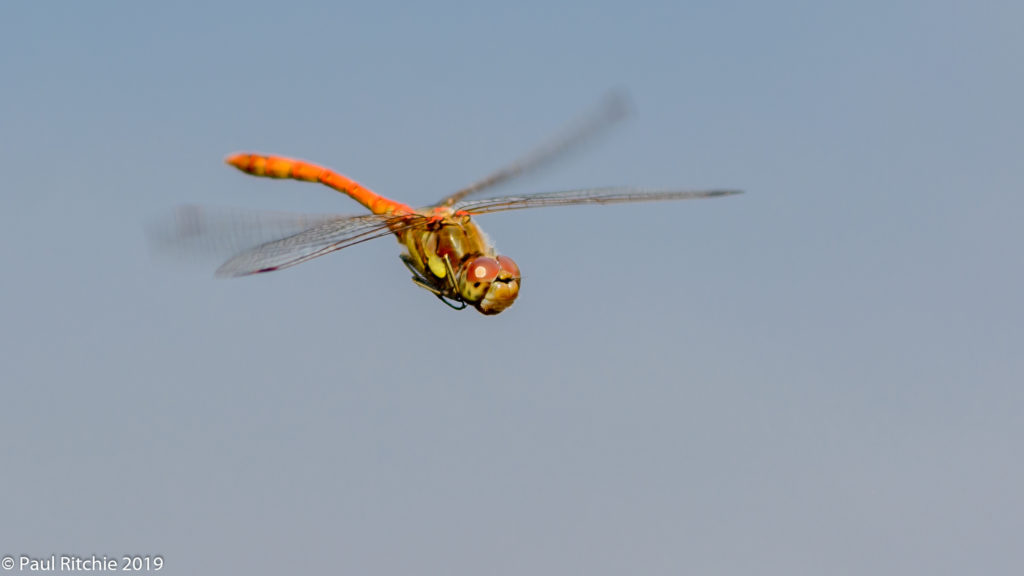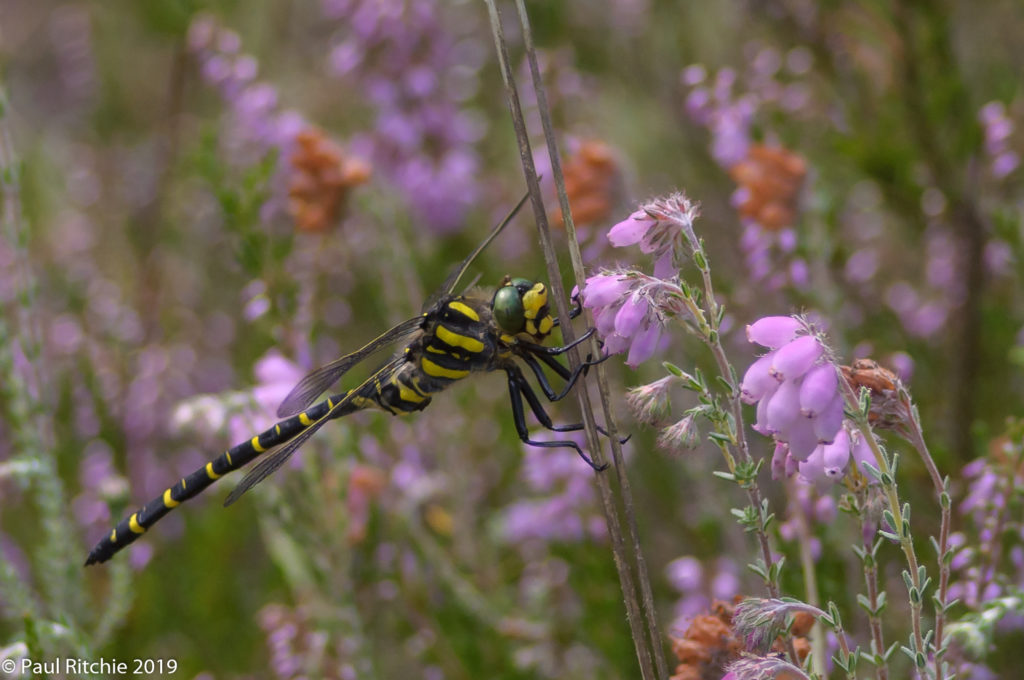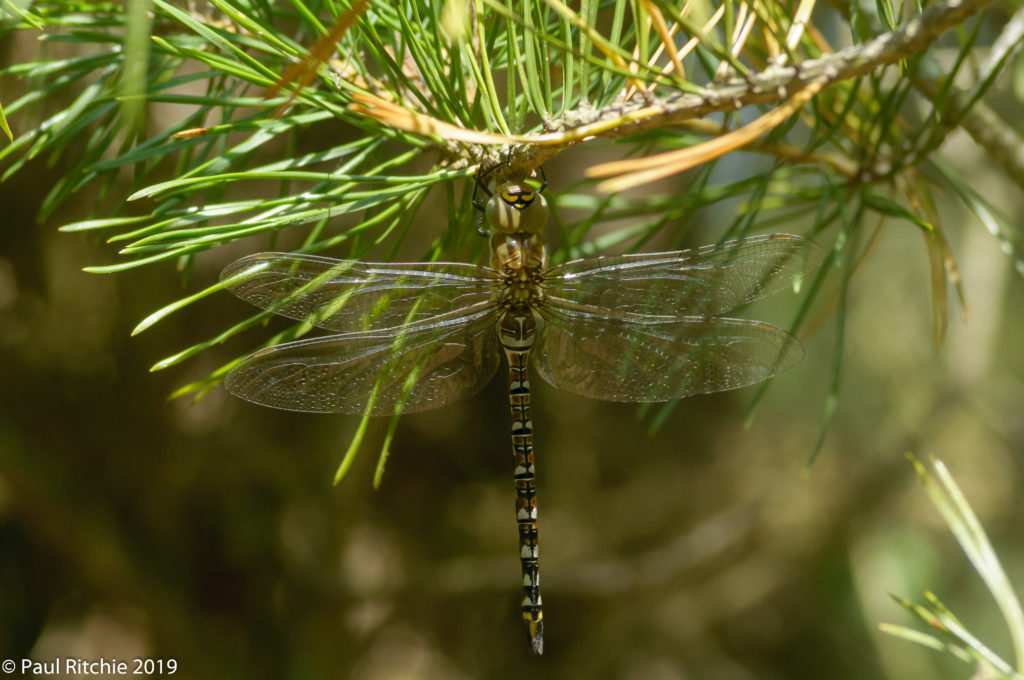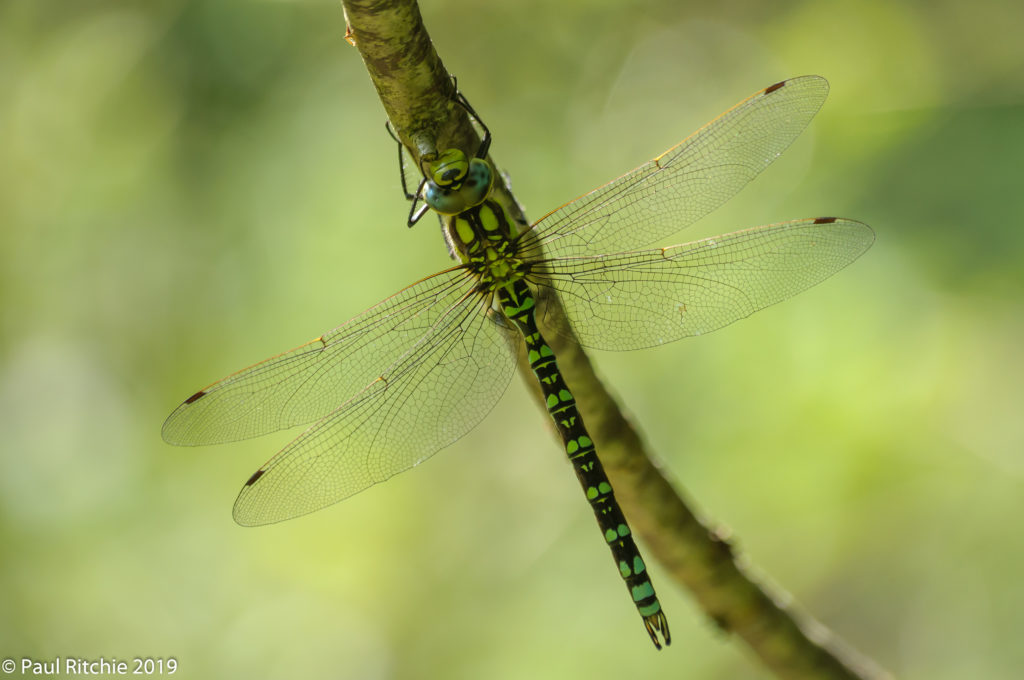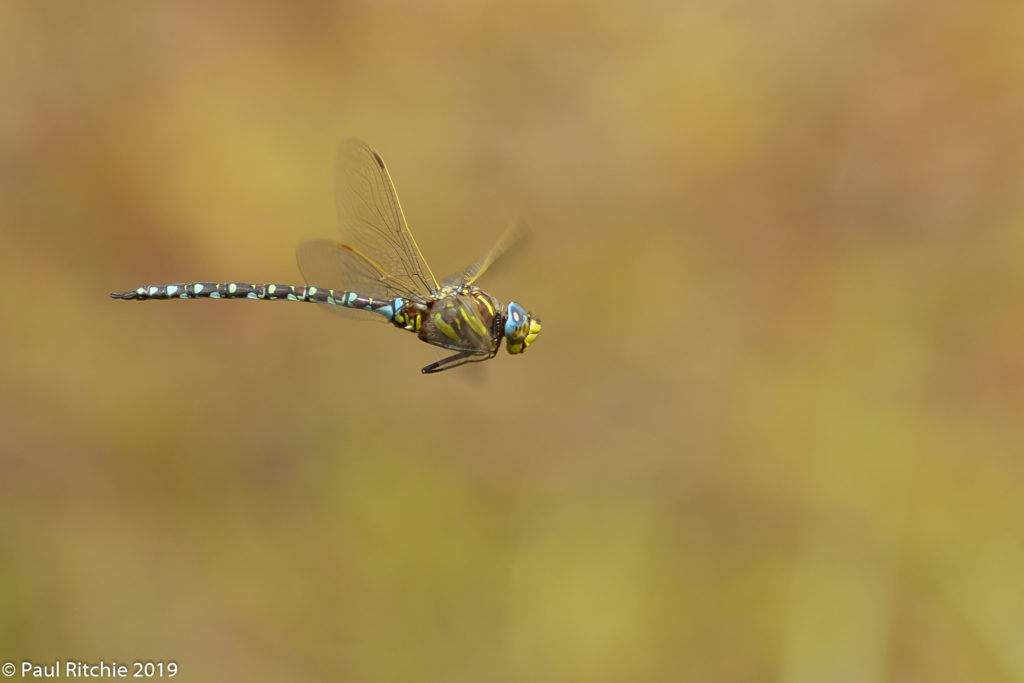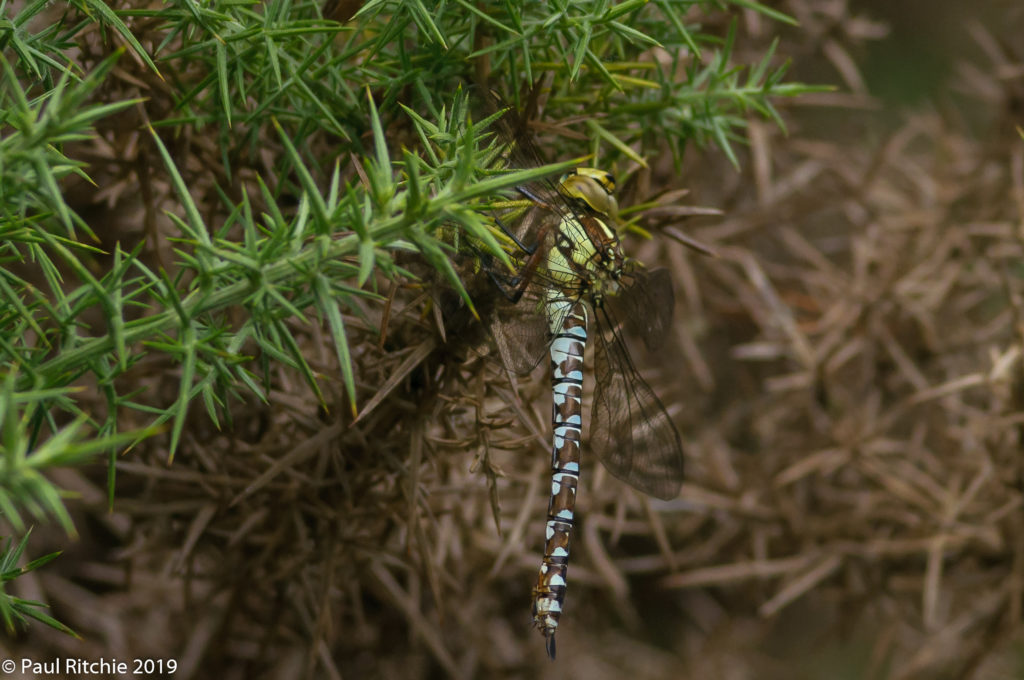On Thursday I returned to Ramsdown full of hope. The first pond had a few more puddles after the recent rain yet the pond at the base of the hillock was bone dry!
The clearing showed a couple of twitchy Southern, the inevitable Brown Hawker rising in panic at my passing and the expected Migrant Hawkers.
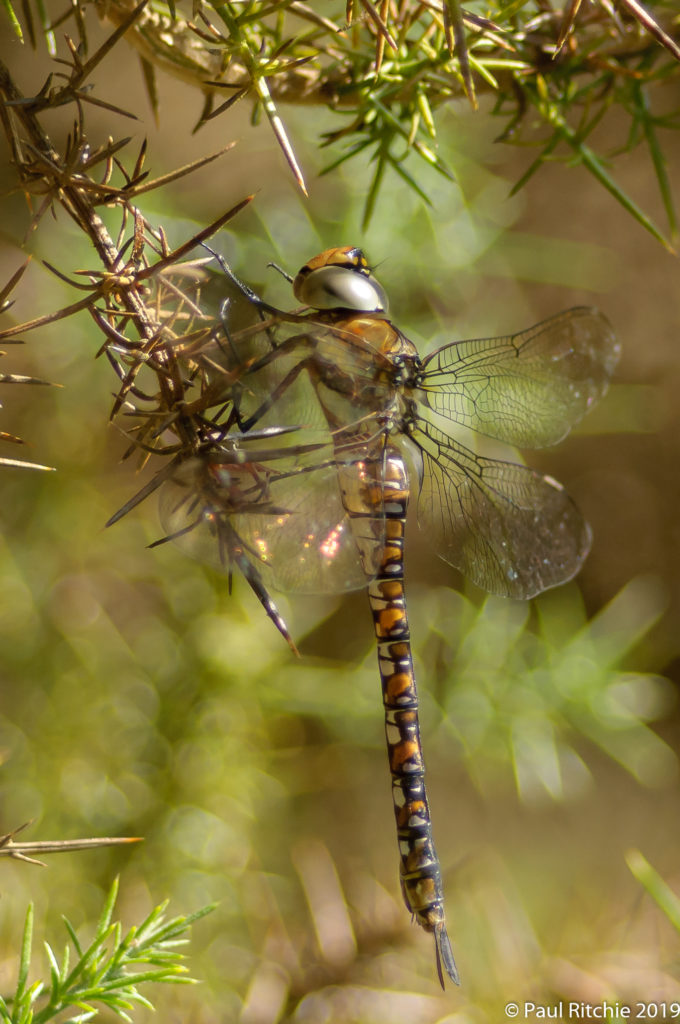
At my favourite pond a Moorland Hawker gave me the most frustrating challenge by refusing to keep to a regular patrol. |This wasn’t helped by the presence of a particularly aggressive Emperor who drove him off at every opportunity.
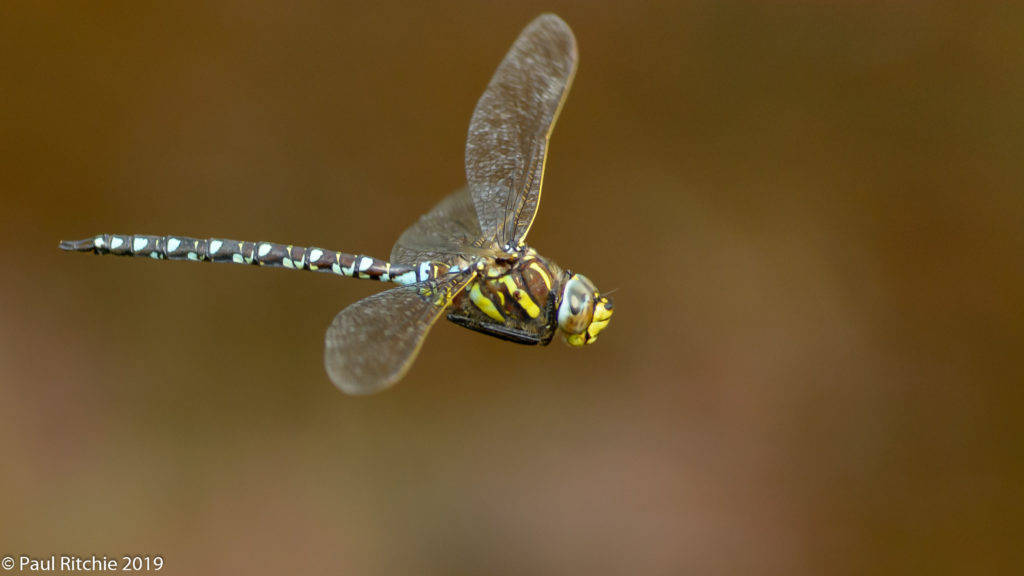
Azure and Emerald Damselflies and a single Black Darter kept the interest and a female Emperor flew in to try to oviposit under the harassment of the patrolling male.
A Broad-bodied Chaser still held court at his favourite perch, occasionally flying out to do battle with one of the many Common Darters.
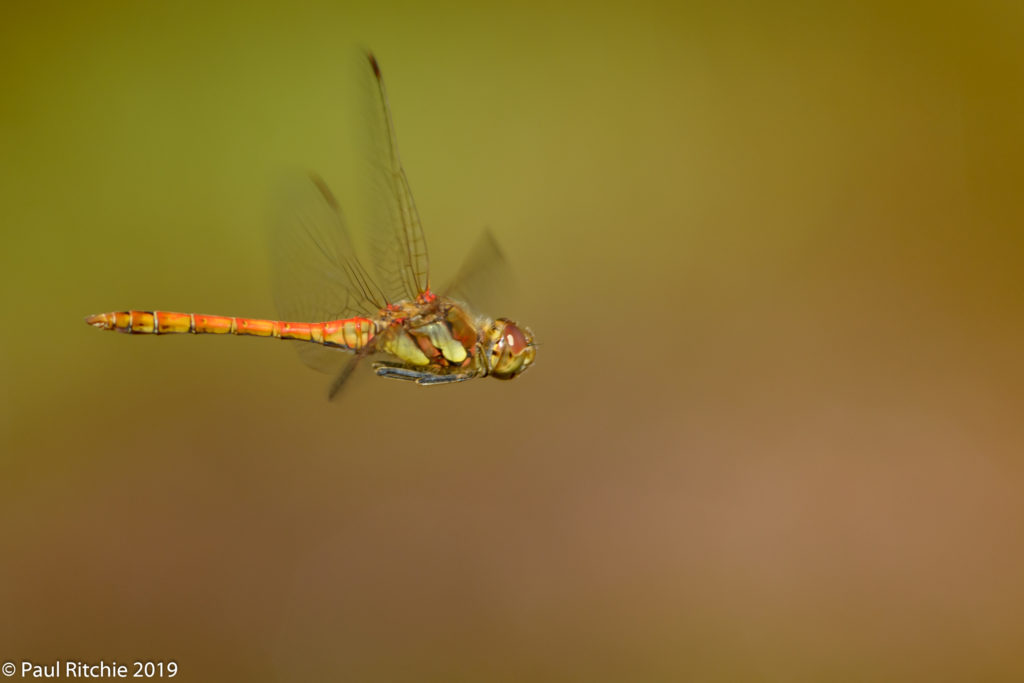
The sound of fluttering wings alerted me to the presence of a female Southern Hawker ovipositing deep down under cover into the muddy bank before rising up, circling me and settling down on a patch of heather.
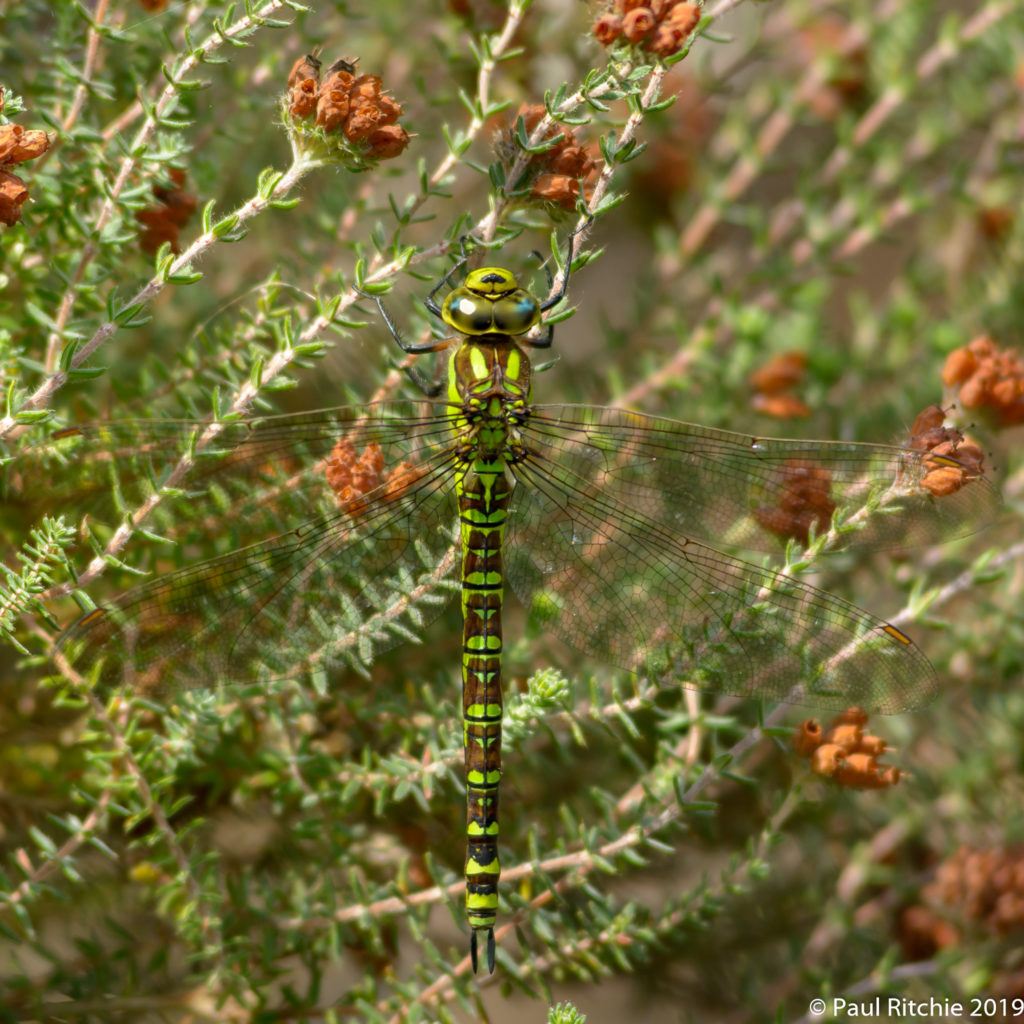
After a brief rest she continued laying her eggs in hard to reach places until she decided upon a log, which offered a better opportunity.
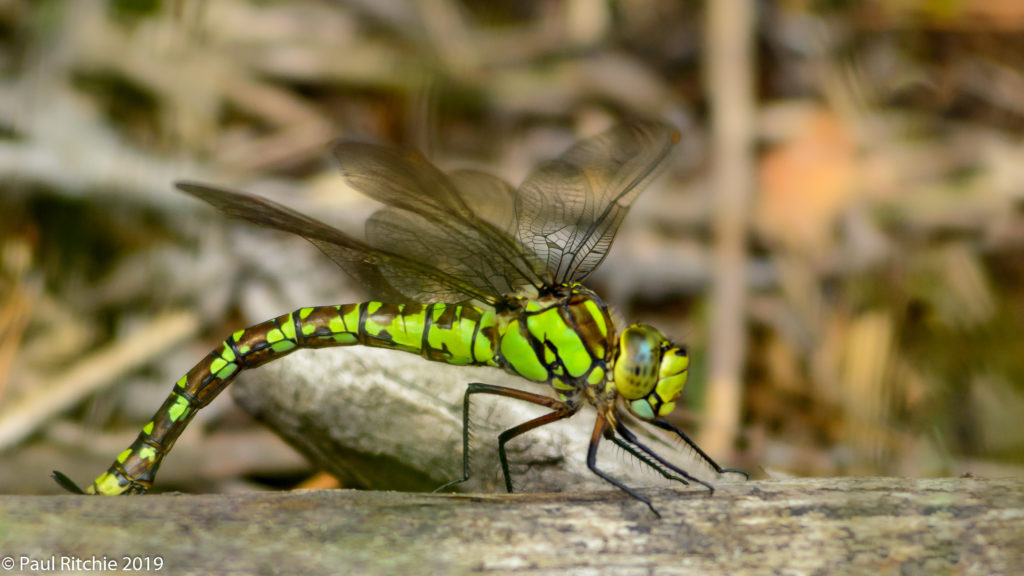
As there was no sign of the Moorland returning I decided to camp out for an hour at the other pond just in case a male, or indeed female flew in, but it was not to be. However it was pleasant to observe the many Migrant Hawkers feeding along the treeline.
I had hoped for a male Southern to come in for a patrol, but I’ll have to wait until next time. Best not become too entitled, eh?

